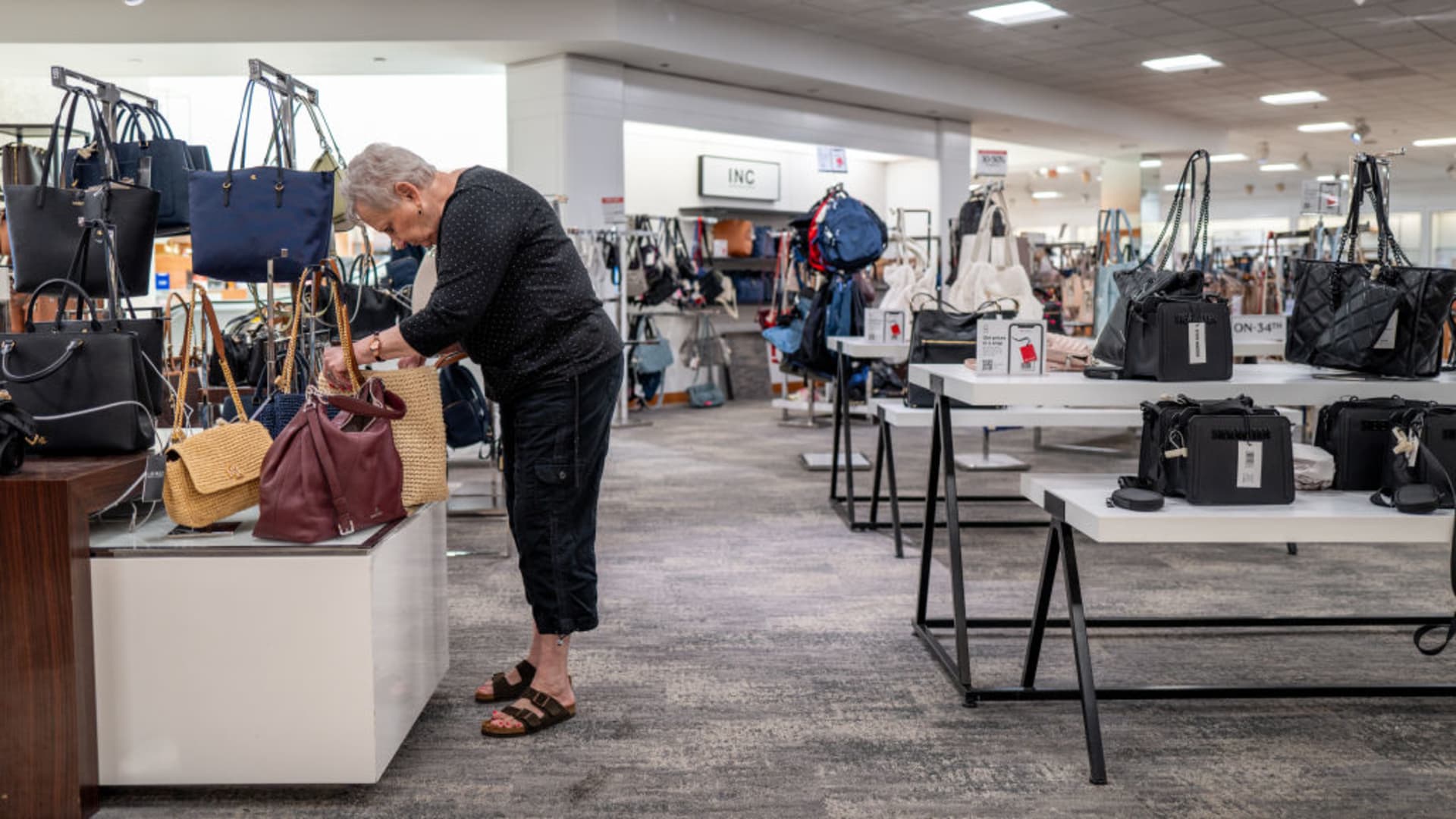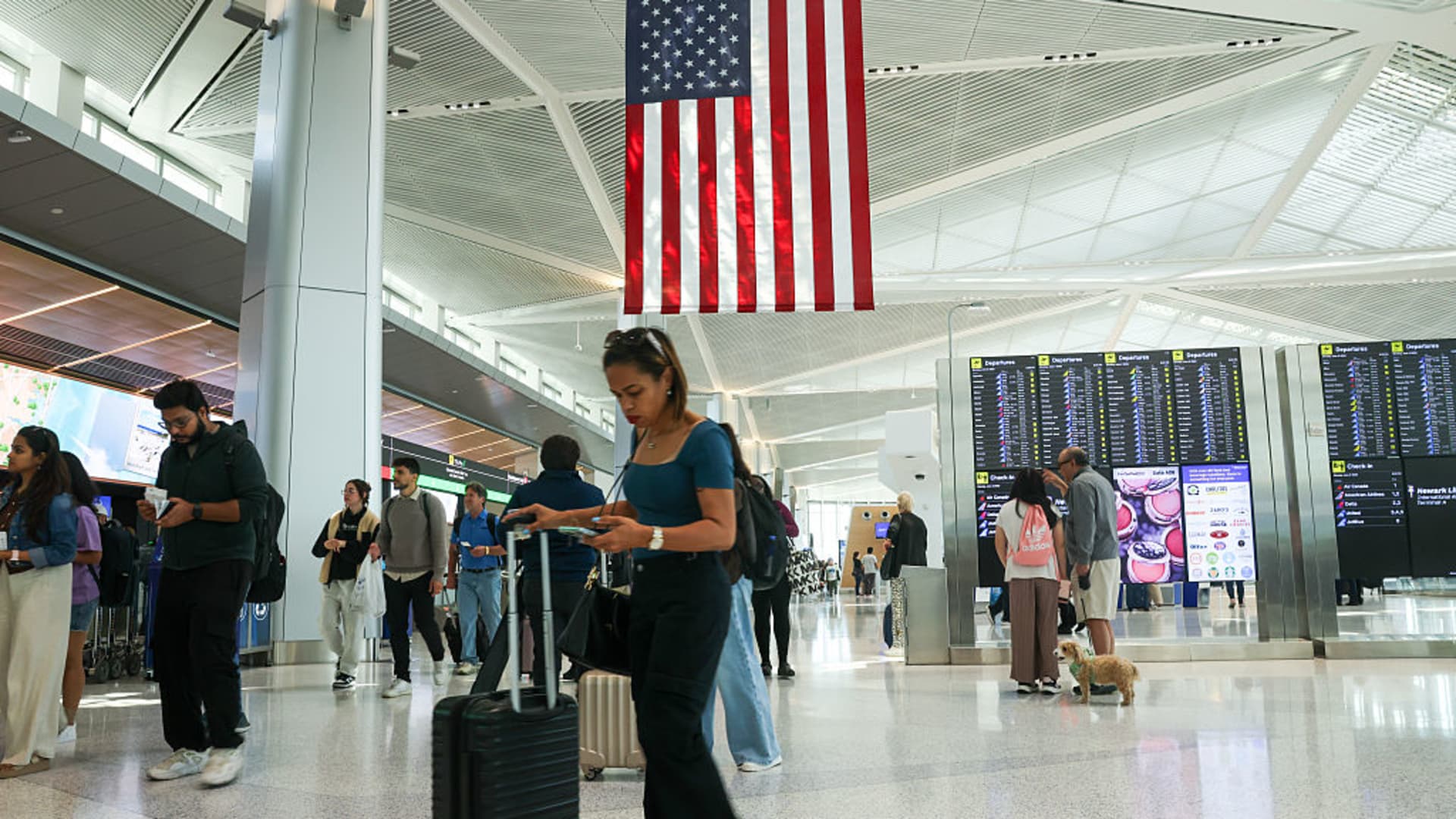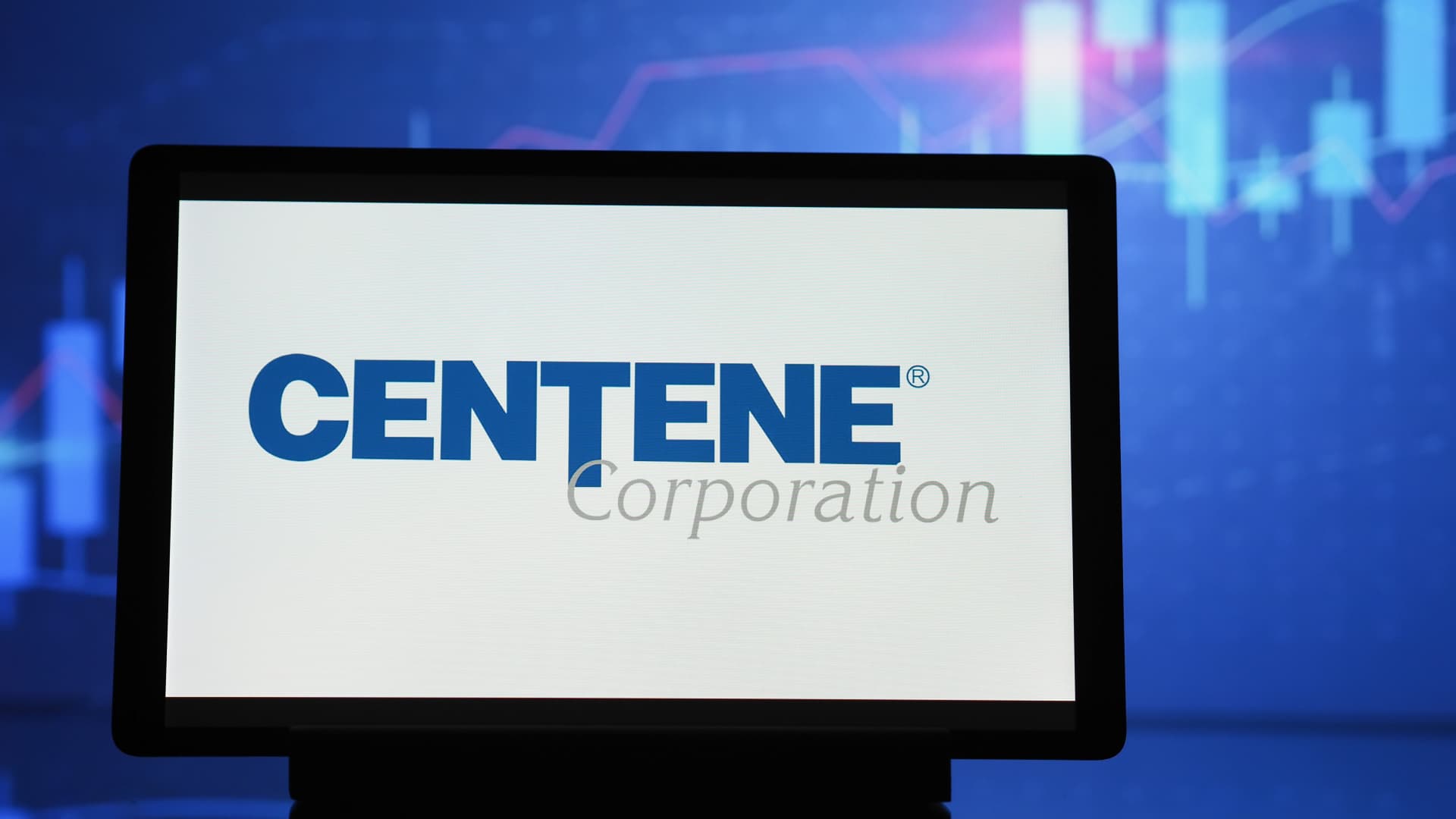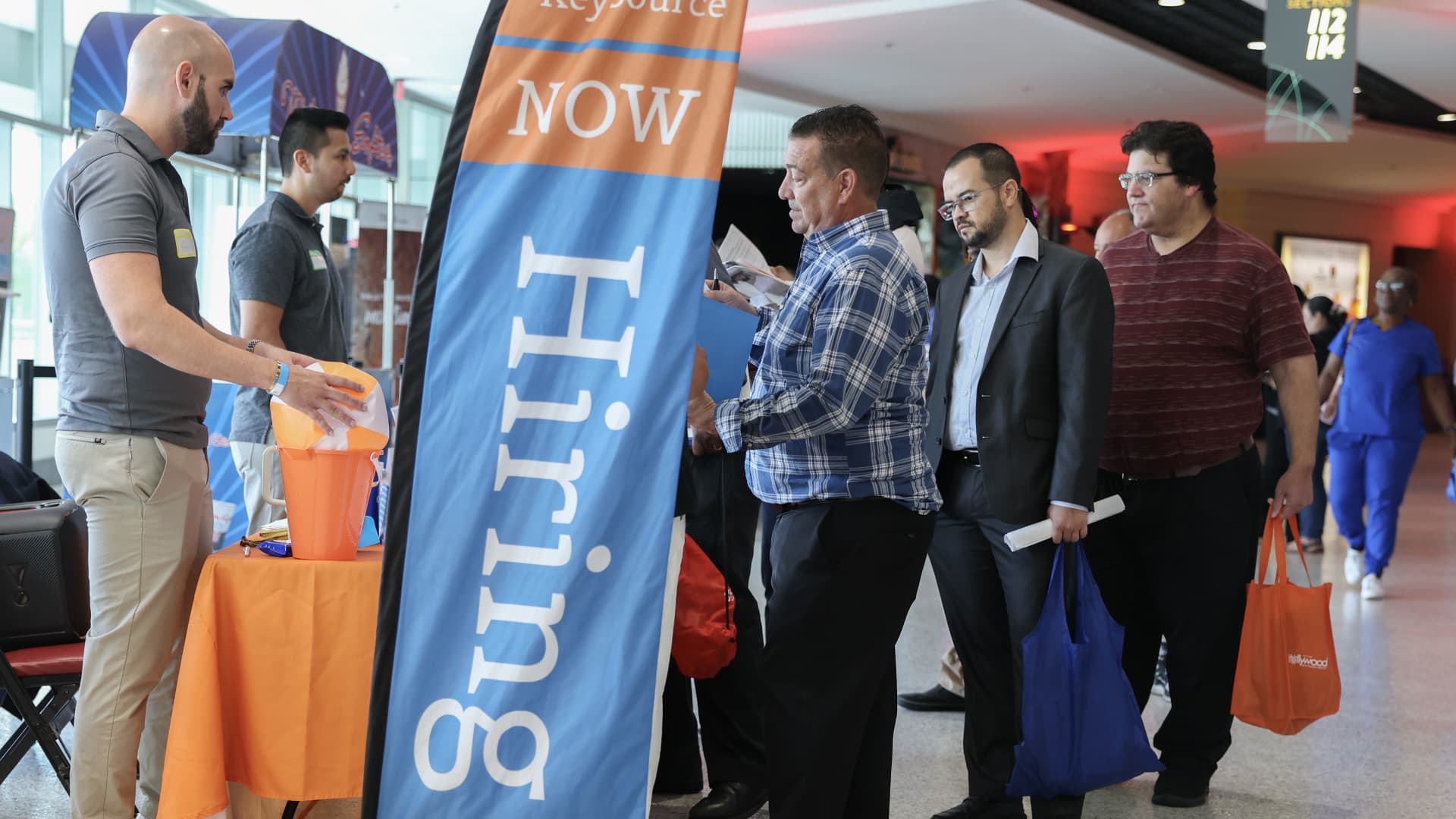Brandon Bell | Getty Images News | Getty Images
Recent price increases in apparel, footwear, and bags across major U.S. department-store websites tracked by DataWeave indicate a turning point in May, when prices started their ascent.
DataWeave analyzes nearly 15,000 SKUs (stock keeping units), a scannable code retailers use to identify and track a product, and has been collecting that data from January to June for signs of price hikes in footwear, apparel, and bags.
“Footwear is now as much as 4% above January levels at some banners, while apparel is roughly half that pace,” said Karthik Bettadapura, co-founder & CEO of DataWeave.
According to the data, Macy’s 1589 SKUs of footwear reported a 4.2% increase in price, followed by Nordstrom (3.1%), and Dillard’s (2%.)
Prices in store may vary slightly from online prices, but typically follow the same pricing trend.
Type of product and its sourcing can influence how fast the price hikes arrive.
Private-label lines, many of which are made in China, refresh every few months, so retailers like Macy’s and Nordstrom feel higher landed costs sooner, according to Bettadapura. Footwear reacts fastest because it carries some of the steepest baseline duties and relies heavily on China for finished pairs. “Even a modest levy can ripple through quickly once fresh stock lands in distribution centers,” Bettadapura said. Apparel, with longer design cycles and a more diversified supply base, “is moving more gradually,” she added.
Macy’s, Nordstrom and Dillard’s did not respond to requests for comment.
The SKU data supports findings from a recent survey conducted by the Footwear Distributors and Retailers of America, where 55% of respondents said they expect their average retail price to rise between 6%-10% in 2025 as a result of tariffs.
“With all back-to-school styles now facing tariffs of between 10-30 percent, higher prices should not be a surprise this summer,” said Stephen Lamar, CEO of the American Apparel and Footwear Association. “While each company makes their own decisions, these tariff costs are now being felt across the board,” he said.
In apparel, DSW topped the list in recent price increases, at 2%, followed by Macy’s (1.9%), and Nordstrom (1.8%), according to Dataweave.
“If these tariffs persist or increase after July 9, we can expect more of the same in the seasons to come,” Lamar said.
In the bags category (which includes handbags & shoulder bags, crossbody, sling and belt bags, totes, backpacks, travel & duffel bags, small goods and clutches), outdoor recreation store REI had the top price increase, at 2.6% Dillard’s, Macy’s, and Nordstrom all had nominal increases.
Trump has been non-committal recently on sticking to the July 9 deadline his White House set for tariff deals with many trading partners or implement additional tariffs. The White House announced on Wednesday morning it has a trade deal with one key retail manufacturing partner, Vietnam.
Trump said in a social post the tariff rate on Vietnamese goods will be 20%, and go to 40% for any goods that are finished in Vietnam but originate in other countries, such as China, in what is called “transshipment,” a supply chain strategy also known as “China Plus One” that has been used by companies to avoid tariffs.
Vietnam trade deal concerning to retail suppliers
Apparel companies that rely on Vietnam’s manufacturing capacity could face higher import costs under the new tariff rate. Nike, Lululemon, Patagonia, Puma, and H&M are among retail industry companies with manufacturing operations in Vietnam.
Vietnam is the second-largest supplier for footwear, apparel, and accessories sold into the U.S. market, according to the American Apparel and Footwear Association. In 2024, the U.S. imported 274 million pairs of footwear from Vietnam, accounting for over half of all athletic footwear imports by volume and value, according to the Footwear Distributors and Retailers of America, and it says Vietnam is on pace to be the largest international footwear supplier in 2025.
The 20% tariff would be less than Trump’s initial threat of a 46% tariff on goods from Vietnam, but would be stacked on top of existing 10% most-favored nation tariffs paid by Vietnam, bringing the combined tariff to as high as 30% at a minimum, which could cause significant economic challenges for retailers. Meanwhile, the 40% transshipment tariff that has yet to be clearly defined by the administration.
“Disrupting that pipeline with additional tariffs would hit American consumers and our industry hard,” FDRA CEO Matt Priest said in a statement on Wednesday calling the Vietnam tariff agreement as “unnecessary” and “bad economics.”
Next move on prices may come from consumers
“Retailers have long warned that tariffs will impact pricing, and some consumers may be starting to see those reflected in key consumer products,” said Jonathan Gold, vice president of supply chain and customs policy at the National Retail Federation. “Tariffs continue to be a significant challenge for retailers, especially with the ongoing uncertainty and unknowns regarding the final tariff rates.”
He said retailers have tried to mitigate price increases, but the merchandise subject to the tariffs is working its way through the supply chain and is now being placed on store shelves.
“We’ll be watching the back-to-school intake closely to gauge whether this pricing momentum accelerates or levels off,” Bettadapura said.
Bill Simon, former CEO of Walmart, said the data correlates with what he is seeing, and the next move in either stoking or stifling the inflation trend across products may be up to the consumer.
“Companies are mitigating what they can and are passing on the rest,” Simon told CNBC. “Consumers, who are the final arbiter of tariffs, then come into play. Will they buy the item that has gone up in price, or will they switch to another item in the same category that has less (or no) tariff? The customer gets to decide if they want to leave the category all together,” he said.
Simon gave an example from the grocery aisle, saying if the price of bananas goes up because of a tariff, customers can decide to either buy them or exit the category and buy oranges from California or Florida instead. “If you look at the item level, you will see a higher price on banana but when you look at the category, you will see no price increase because consumers switched to oranges. That is why I believe despite seeing item-level price increases, we are not seeing broader inflation increasing. Consumers are using their power to determine what is too much and what is not,” he said.
Peter Boockvar, chief investment officer at Bleakley Financial Group, says inflation is underway, “and has been for the last few months,” citing a recent rise in core import prices, ex food and energy, in April and May. “The only question is how this will now flow through the supply chain and who gets to eat it,” Boockvar said. “[Fed Chair Jerome] Powell has made it clear that he is going to wait as long as possible until the tariffs fully work their way through the supply chain so he can see where they end up in terms of absorption.”

















Leave a Reply